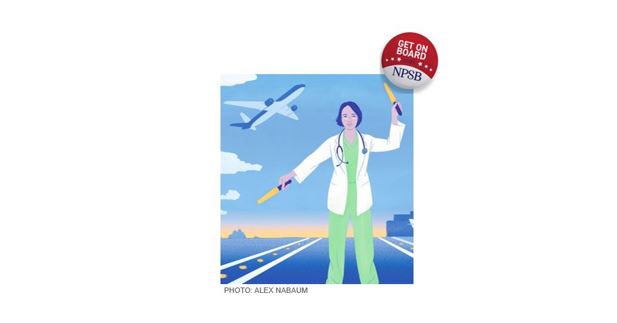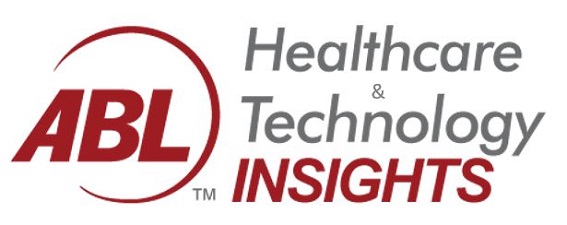
09 Sep Since to Err is Still Human – Healthcare Could Use a Little Help
Medical Errors Cause ~250,000 Deaths a Year in the U.S.
When the seminal Institute of Medicine’s report “To Err is Human: Building a Safer Health System” was released over 20 years ago, the nation was shocked to learn that 98,000 patients die in the hospital at the hands of “the system” each year. Since then, Johns Hopkins has picked-up the mantle of being healthcare’s conscience by releasing a steady stream of reports, like “preventable medical error cause an estimated 250,000 deaths a year in the U.S.,” ranking as “the third-leading cause of death – after heart disease and cancer,” and “10 percent of all U.S. deaths are now due to medical error.” Meanwhile, other reports have claimed the number of deaths could be as high as 440,000, because “physicians, funeral directors, coroners and medical examiners rarely note on death certificates the human errors and system failures involved” in patients’ deaths.
Do we need a National Patient Safety Board?
So significant, and frequent, are these reports that there’s now a proposal for a National Patient Safety Board modeled after the National Transportation Safety Board. Like the NTSB, the NPSB would be an independent federal agency, and would “conduct centralized studies into medical mishaps and systemic breakdowns to prevent future catastrophes.” Now that EMRs are virtually ubiquitous in hospitals, the idea would be to use de-identified data from these health records, artificial intelligence, and reporting from other agencies, to identify cause-and-effect relationships and issue timely recommendations to improve patient safety – for everyone.
The Leapfrog Group & Checklist Manifesto Inspire Change
Of course, since To Err is Human was published in 1999, several steps have been taken to dramatically reduce the number – and likelihood of “medical misadventures.” For example, The Leapfrog Group, a patient watchdog organization that actually involves patients, has reported on the harm done to mothers and babies by electing a pre-term delivery date – a cause that the March of Dimes actively advocates against. The result has been a reduction of early elective delivery rates by 84%.
In announcing the plans for a National Patient Safety Board, The Wall Street Journal referenced Atul Gawande’s pathbreaking book The Checklist Manifesto: How to Get Things Right. Published in 2009, Dr. Gawande related data and lessons learned from the airline and other industries, including the value of implementing the World Health Organization’s pre-surgical checklist. When discussing the WHO Checklist with our ABL Organization San Francisco Healthcare Round Table, several Members recounted the pushback they’ve experienced with applying this simple and effective approach for improving the quality and outcomes of care, particularly by surgeons, and others involved in up to nine surgeries a day. The bottom line is, sharing responsibility in the OR – and making time to listen again and again thoughtfully to the same pre-surgical questions, requires massive culture change, and acceptance of the new routine’s importance.
Innovation in “Drug Delivery”
In recent years at ABL, we’ve discussed many other examples of how healthcare is getting safter. Notably, at Kaiser Permanente’s Garfield Innovation Center, in San Leandro, they test not just products but alternative approaches to better, safer care. For example, on an airplane it would be a rare event indeed if someone outside the cockpit – like a flight attendant – actually put a passenger in harm’s way. But, in healthcare, it happens every day: a pharm tech mislabels a drug, a nurse administers it without question, or inserts a catheter incorrectly. At the Garfield Center they modeled how Nurse Smith, for example, could easily confuse the meds intended for Mrs. Jones in bed 221A with Mrs. Black’s, in 221B, if he was distracted. Through repeated trial-and-error simulations, the Center finally devised a way for co-workers to recognize when Nurse Smith was preparing or passing medications, so they’d refrain from interrupting him – a major cause of medication errors. It’s a simple but effective solution for greatly reducing medication errors – the second most frequent medical error, after misdiagnosis.
Just-in-Time Best Practices on Your Smart Phone
More recently, it’s been recognized that particularly new nurses and Travelers, who frequently are unfamiliar with their hospital’s standard protocols and procedures, need a way to learn them, “Just-in-Time,” from best practice video lessons delivered on the nurses’ smartphones. For example, Arup Roy-Burman , MD’s Elemeno Health’s on-demand microlearning solution keeps clinical staff and Travelers up to date on current, data-based and hospital-specific best practices to reduce variation in care. That way, rather than tip sheets and guidelines getting lost in the Nurses’ Station, guidelines are “in hand” the moment they’re needed.
Recognizing Err IS Human, We Need All the Help we can get to Avoid Making Them
In the finish, the challenge to minimizing – let alone eliminating – medical errors is in recognizing To Err IS Human. Therefore, everyone in a position to “do harm” in healthcare must be given and be willing to embrace all the tools and support, including a federal agency, to ensure patient safety.
CLICK HERE TO COMMENT ON THIS BLOG POST ON MIMI’S LINKEDIN

By Mimi Grant, President, Adaptive Business Leaders (ABL) Organization – Round Tables and Events for CEOs of Healthcare and Technology Companies

